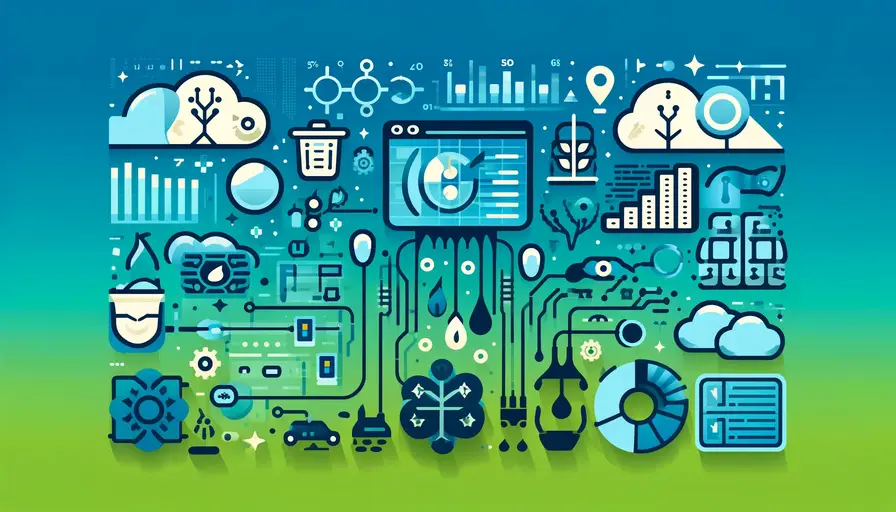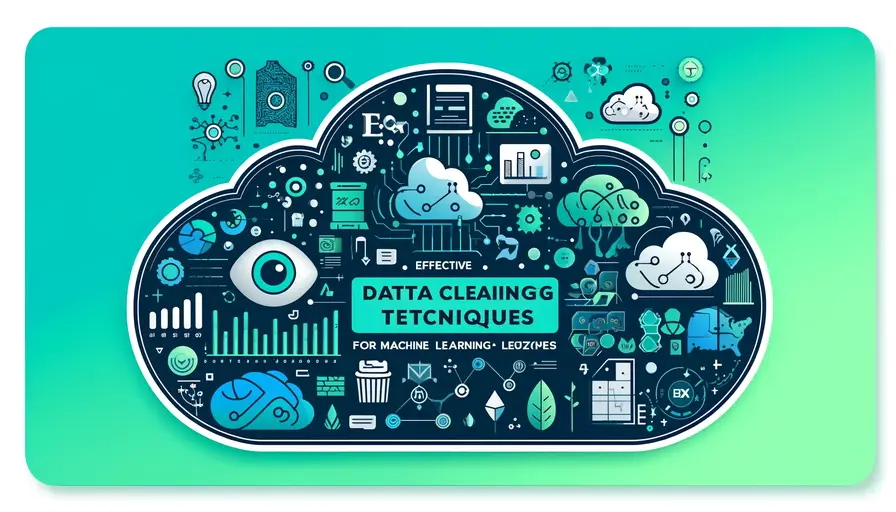
Convolutional Neural Networks

Convolutional Neural Networks (CNNs) are a class of deep learning algorithms that have revolutionized the field of computer vision. By mimicking the way the human brain processes visual information, CNNs have achieved remarkable success in tasks such as image classification, object detection, and segmentation. Their unique architecture allows them to automatically and adaptively learn spatial hierarchies of features from input images.
Structure and Layers of Convolutional Neural Networks
Convolutional Layers
Convolutional layers are the core building blocks of Convolutional Neural Networks. These layers perform the convolution operation, which involves sliding a filter or kernel across the input image to produce feature maps. The filter captures spatial relationships by scanning the input image in small sections, making CNNs highly effective for processing visual data.
Each filter in a convolutional layer is trained to recognize specific features such as edges, textures, or shapes. During training, the network learns to optimize the filter weights to minimize the error in its predictions. This hierarchical learning enables CNNs to detect complex patterns and objects in images by combining simpler features learned at earlier layers.
The output of a convolutional layer is a set of feature maps, each corresponding to a different filter. These feature maps preserve the spatial relationships within the input image, making it possible for subsequent layers to build upon this information. The ability to maintain spatial hierarchies is a key advantage of convolutional neural networks over traditional fully connected networks.
 SVM Support Vector Machine Applications
SVM Support Vector Machine ApplicationsPooling Layers
Pooling layers are another essential component of CNNs, typically placed after convolutional layers. The primary function of pooling layers is to reduce the spatial dimensions of the feature maps, thereby decreasing the computational load and controlling overfitting. Pooling achieves this by summarizing the presence of features in patches of the feature maps.
The most common types of pooling are max pooling and average pooling. In max pooling, the maximum value within a patch is selected, capturing the most prominent feature. In average pooling, the average value is taken, providing a smoother representation. Max pooling is generally preferred in practice as it helps preserve important features more effectively.
Pooling layers not only reduce the spatial dimensions but also introduce some degree of translation invariance, meaning that the network becomes less sensitive to small shifts in the input image. This property is crucial for tasks like object recognition, where the position of the object may vary within the image.
Fully Connected Layers
After several convolutional and pooling layers, the feature maps are typically flattened into a one-dimensional vector and passed through one or more fully connected layers. These layers perform high-level reasoning by combining the features extracted by the previous layers. Each neuron in a fully connected layer is connected to every neuron in the preceding layer, allowing for a comprehensive integration of the learned features.
 Mastering Robust and Efficient Machine Learning Systems
Mastering Robust and Efficient Machine Learning SystemsFully connected layers are responsible for mapping the extracted features to the final output, such as class labels in an image classification task. The weights in these layers are adjusted during training to minimize the prediction error, just like in traditional neural networks.
The combination of convolutional, pooling, and fully connected layers enables CNNs to learn both low-level and high-level features, making them incredibly powerful for a wide range of computer vision applications. The hierarchical structure of CNNs allows them to capture intricate patterns and relationships within the data, leading to state-of-the-art performance on many challenging tasks.
Training and Optimization of Convolutional Neural Networks
Data Preparation and Augmentation
Effective training of convolutional neural networks requires a large amount of labeled data. Preparing this data involves collecting a diverse set of images and their corresponding labels. However, obtaining sufficient labeled data can be challenging in many scenarios. To address this issue, data augmentation techniques are employed to artificially increase the size and diversity of the training dataset.
Data augmentation involves applying random transformations to the input images, such as rotation, translation, flipping, and scaling. These transformations create new variations of the existing images, helping the network generalize better to unseen data. By augmenting the training data, the network becomes more robust to variations and less prone to overfitting.
 Can a Beginner Learn Machine Learning without Prior Experience?
Can a Beginner Learn Machine Learning without Prior Experience?For example, Keras provides a convenient API for data augmentation. Here's a sample code to demonstrate data augmentation using Keras:
from keras.preprocessing.image import ImageDataGenerator
# Create an instance of ImageDataGenerator
datagen = ImageDataGenerator(
rotation_range=40,
width_shift_range=0.2,
height_shift_range=0.2,
shear_range=0.2,
zoom_range=0.2,
horizontal_flip=True,
fill_mode='nearest'
)
# Load an example image
img = load_img('example.jpg') # PIL image
x = img_to_array(img) # Numpy array with shape (3, 150, 150)
x = x.reshape((1,) + x.shape) # Reshape to (1, 3, 150, 150)
# Generate batches of augmented images
for batch in datagen.flow(x, batch_size=1):
plt.figure()
imgplot = plt.imshow(array_to_img(batch[0]))
break # Display only one batch of imagesLoss Function and Optimization Algorithms
Training a convolutional neural network involves minimizing a loss function that quantifies the difference between the network's predictions and the true labels. The choice of loss function depends on the specific task. For instance, in classification tasks, the categorical cross-entropy loss is commonly used, while in regression tasks, the mean squared error loss is often preferred.
Optimization algorithms are employed to minimize the loss function by adjusting the network's weights. Gradient descent and its variants, such as stochastic gradient descent (SGD), Adam, and RMSprop, are popular choices for training CNNs. These algorithms iteratively update the weights by computing the gradients of the loss function with respect to the weights and moving in the direction that reduces the loss.
The learning rate is a crucial hyperparameter that controls the size of the weight updates. A too-high learning rate can cause the training to become unstable, while a too-low learning rate can result in slow convergence. Adaptive learning rate algorithms, like Adam, adjust the learning rate during training to improve convergence.
 Unlocking the Potential: Inspiring Quotes on AI and Machine Learning
Unlocking the Potential: Inspiring Quotes on AI and Machine LearningRegularization Techniques
Regularization techniques are essential for preventing overfitting in CNNs. Overfitting occurs when the network learns to memorize the training data rather than generalize to new data. Regularization methods help improve the model's generalization ability by introducing constraints or modifications during training.
One common regularization technique is dropout, which randomly sets a fraction of the neurons' activations to zero during training. This prevents the network from becoming too reliant on specific neurons and encourages the learning of more robust features. Dropout is typically applied to fully connected layers but can also be used in convolutional layers.
Another technique is weight decay or L2 regularization, which adds a penalty term to the loss function proportional to the sum of the squared weights. This discourages the network from learning overly large weights and promotes simpler models. Weight decay helps prevent overfitting by constraining the capacity of the network.
Advanced Architectures and Techniques
Transfer Learning
Transfer learning is a powerful technique that leverages pre-trained models on large datasets, such as ImageNet, for new tasks with limited data. Instead of training a CNN from scratch, which can be computationally expensive and require a large amount of data, transfer learning allows for the reuse of learned features.
 Essential Skills for a Successful Career in Machine Learning
Essential Skills for a Successful Career in Machine LearningIn transfer learning, the initial layers of a pre-trained model, which capture generic features, are retained, while the final layers are fine-tuned or replaced to adapt to the specific task. This approach significantly reduces the training time and improves performance, especially when the target dataset is small.
For instance, TensorFlow provides various pre-trained models that can be used for transfer learning. Here is a sample code to demonstrate transfer learning using TensorFlow:
import tensorflow as tf
from tensorflow.keras.applications import VGG16
from tensorflow.keras.layers import Dense, Flatten
from tensorflow.keras.models import Model
# Load the pre-trained VGG16 model without the top layers
base_model = VGG16(weights='imagenet', include_top=False, input_shape=(224, 224, 3))
# Add new top layers for the specific task
x = base_model.output
x = Flatten()(x)
x = Dense(256, activation='relu')(x)
predictions = Dense(num_classes, activation='softmax')(x)
# Create the new model
model = Model(inputs=base_model.input, outputs=predictions)
# Freeze the layers of the base model
for layer in base_model.layers:
layer.trainable = False
# Compile the model
model.compile(optimizer='adam', loss='categorical_crossentropy', metrics=['accuracy'])Data Augmentation in Practice
While data augmentation has been briefly mentioned, it is worth exploring in greater detail due to its importance in enhancing the performance of convolutional neural networks. By generating additional training examples through transformations, data augmentation helps prevent overfitting and improves the network's ability to generalize.
Common augmentation techniques include random cropping, rotation, brightness adjustment, and adding noise. These transformations simulate real-world variations and make the model more robust to different scenarios. Data augmentation can be performed on-the-fly during training using libraries like Augmentor.
 Is Python the Primary Programming Language for Machine Learning?
Is Python the Primary Programming Language for Machine Learning?Here's an example using Augmentor for data augmentation:
import Augmentor
# Create a pipeline for data augmentation
p = Augmentor.Pipeline("path/to/dataset")
# Add augmentation operations
p.rotate(probability=0.7, max_left_rotation=10, max_right_rotation=10)
p.zoom_random(probability=0.5, percentage_area=0.8)
p.random_contrast(probability=0.5, min_factor=0.7, max_factor=1.3)
p.flip_left_right(probability=0.5)
# Generate augmented images
p.sample(1000)Generative Adversarial Networks (GANs)
Generative Adversarial Networks (GANs) represent an advanced technique in the realm of CNNs. Introduced by Ian Goodfellow and his colleagues, GANs consist of two neural networks, the generator and the discriminator, that compete against each other. The generator creates synthetic images, while the discriminator attempts to distinguish between real and fake images.
The training process involves a zero-sum game where the generator tries to produce images indistinguishable from real ones, and the discriminator gets better at identifying fakes. This adversarial training leads to the generation of highly realistic images, making GANs a powerful tool for image synthesis and augmentation.
GANs have numerous applications, including generating high-resolution images, creating realistic animations, and even enhancing the quality of medical imaging. Their ability to learn complex distributions and generate novel samples makes them an exciting area of research and application.
Applications and Future Directions
Computer Vision
The impact of convolutional neural networks on computer vision has been profound. CNNs are the backbone of many state-of-the-art systems for tasks such as image classification, object detection, and semantic segmentation. Their ability to automatically learn and extract hierarchical features from images has led to breakthroughs in visual recognition.
In image classification, CNNs have outperformed traditional methods on benchmark datasets like ImageNet, achieving human-level accuracy. In object detection, models like YOLO and Faster R-CNN leverage CNNs to detect and localize objects in real-time. Semantic segmentation models, such as U-Net, use CNNs to assign class labels to each pixel in an image, enabling detailed scene understanding.
Medical Imaging
Convolutional neural networks have also made significant strides in the field of medical imaging. They are used for tasks such as disease diagnosis, tumor detection, and organ segmentation. The ability of CNNs to learn from large amounts of medical data and identify subtle patterns has improved diagnostic accuracy and patient outcomes.
For example, CNNs are used in radiology to analyze X-rays, CT scans, and MRI images. They can detect abnormalities such as tumors, fractures, and lesions with high precision. In histopathology, CNNs assist pathologists by analyzing tissue samples and identifying cancerous cells. These applications not only enhance diagnostic accuracy but also reduce the workload of medical professionals.
Autonomous Vehicles
The development of autonomous vehicles heavily relies on convolutional neural networks for visual perception. CNNs process data from cameras and other sensors to understand the vehicle's surroundings, detect obstacles, and navigate safely. This involves tasks like lane detection, traffic sign recognition, and pedestrian detection.
CNNs enable autonomous vehicles to make real-time decisions based on visual inputs, enhancing safety and efficiency. Companies like Tesla and Waymo utilize advanced CNN architectures to develop self-driving systems that can operate in complex environments. The continuous improvement of CNNs is crucial for the advancement of autonomous driving technology.
The evolution of convolutional neural networks has significantly transformed various fields by enabling machines to interpret and understand visual data with unprecedented accuracy. From computer vision to medical imaging and autonomous vehicles, CNNs have demonstrated their versatility and effectiveness in tackling complex tasks.
As research and development in this area continue, we can expect even more innovative applications and advancements. The integration of CNNs with other technologies, such as Generative Adversarial Networks (GANs) and Reinforcement Learning, will likely lead to new breakthroughs and further expand the horizons of artificial intelligence.
For those interested in exploring CNNs further, numerous resources are available online, including tutorials, courses, and research papers on platforms like Coursera and arXiv. The journey into the world of convolutional neural networks promises to be both challenging and rewarding, offering endless possibilities for innovation and discovery.
If you want to read more articles similar to Convolutional Neural Networks, you can visit the Education category.






You Must Read